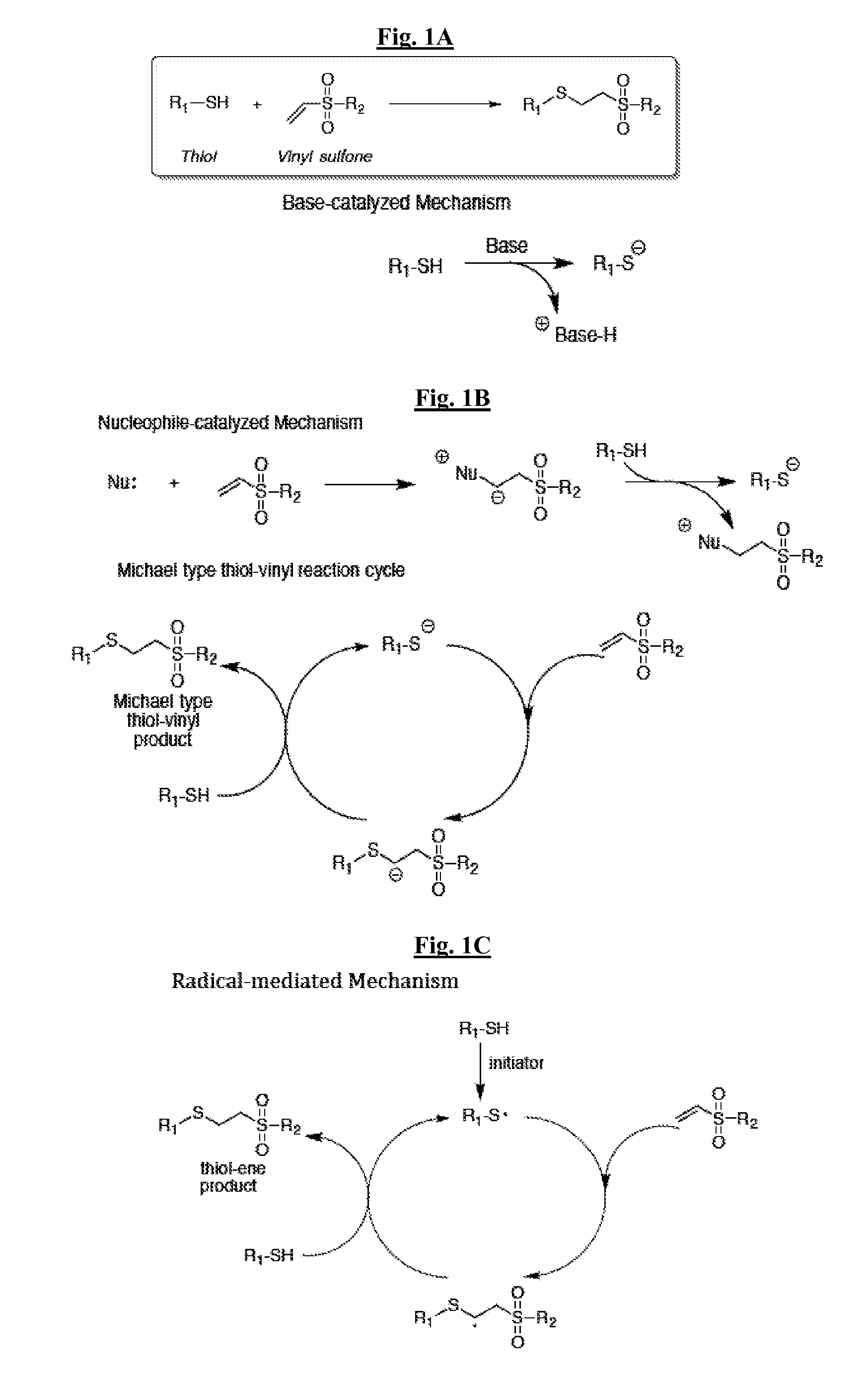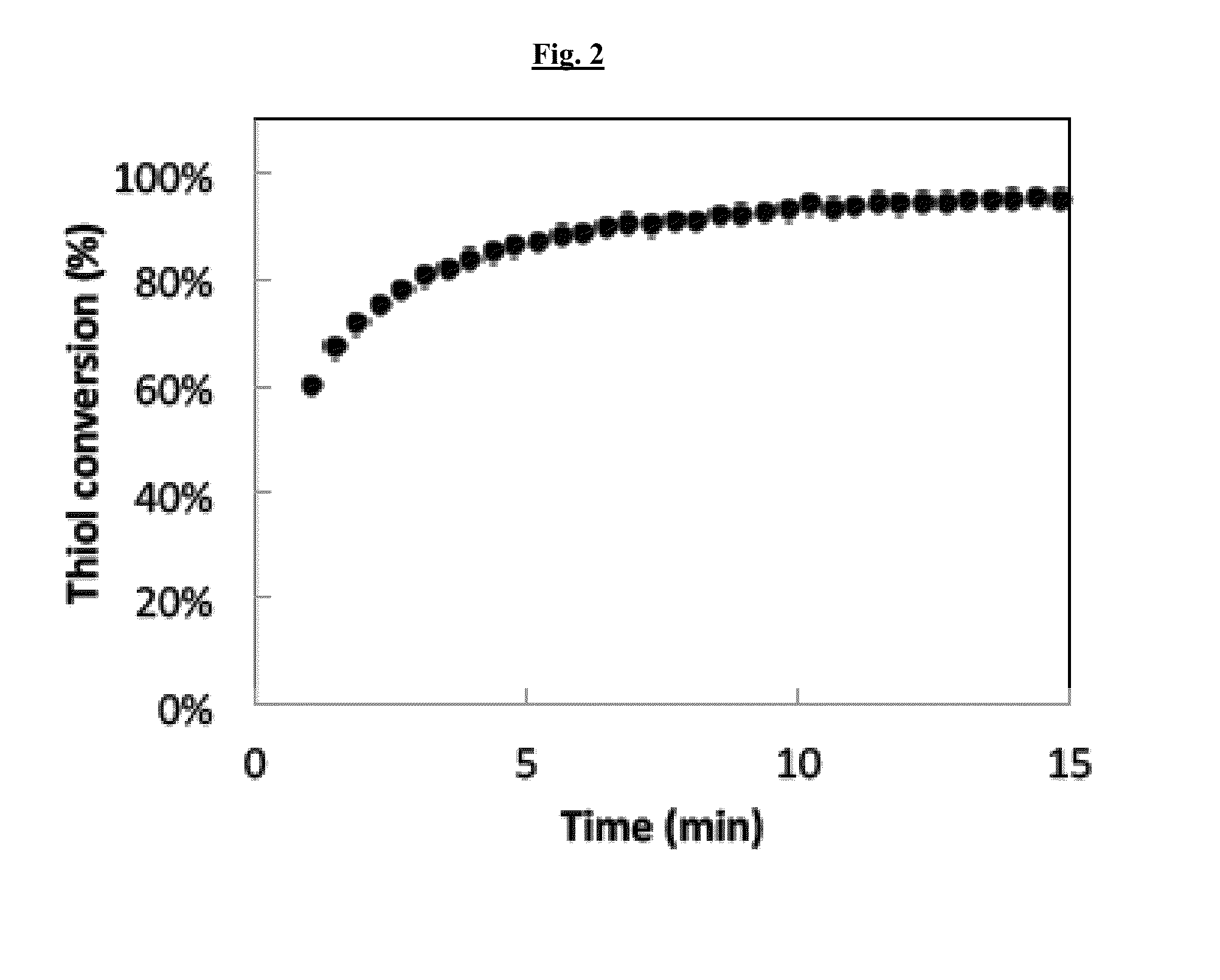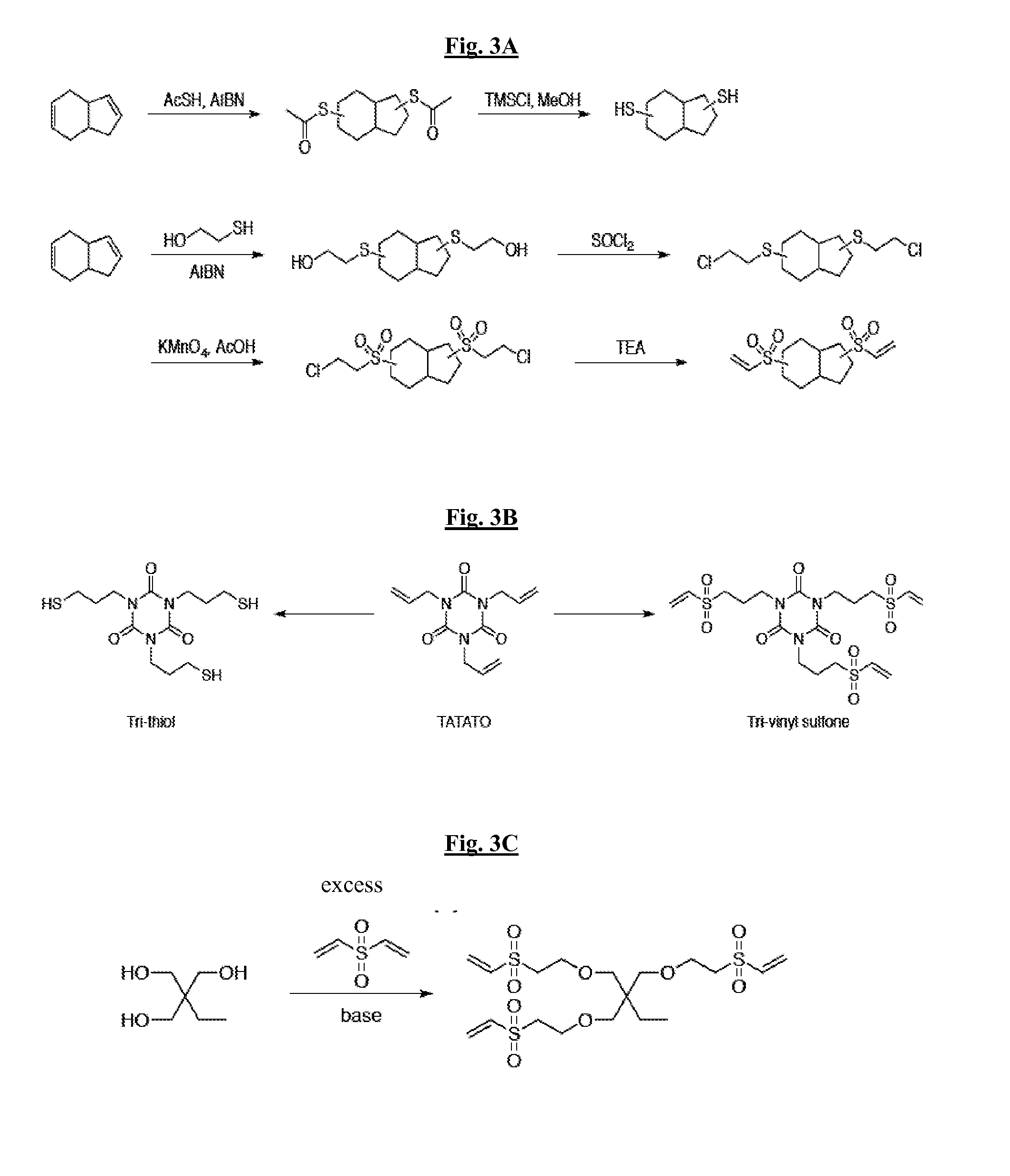Novel dental composites systems and methods of making the same and using same
a composite and dental technology, applied in the field of dental composite systems and methods of making the same and using same, can solve the problems of reducing the useful life of many restorations, reducing the immune function, and often not being a lifelong restoration of function or appearan
- Summary
- Abstract
- Description
- Claims
- Application Information
AI Technical Summary
Benefits of technology
Problems solved by technology
Method used
Image
Examples
example 1
[0143]The thiol-vinyl sulfone Michael addition reaction is a highly efficient reaction that can be catalyzed by either a base (e.g., triethylamine) or a nucleophile (e.g., methyldiphenylphosphine) to yield a polymer with essentially quantitative functional group conversion. This reaction proceeds rapidly through an ideal step growth reaction when catalyzed by radicals and bases / nucleophiles.
[0144]A model reaction between 1-hexane thiol (HT) and ethyl vinyl sulfone (EVS) catalyzed by a trace amount of the nucleophile methyldiphenylphosphine (MDPP) led to near-quantitative conversion within the first 15 minutes of the reaction (FIG. 2). Higher concentrations of the MDPP beyond 0.5 wt % catalyst led to quantitative conversion of the thiol-vinyl sulfone before the mixture can even be placed in the FTIR for analysis. The vinyl sulfones were much more reactive under these conditions than acrylate functional groups in both the base-catalyzed pathway and the nucleophilic Michael addition re...
example 2
[0148]In certain embodiments, the thiol-vinyl sulfone systems of the invention have the ability to react rapidly to high conversion; to achieve, even with flexible monomers, high modulus, Tg and toughness polymers; and to reduce water interactions. These reactions have approximately 60% of the shrinkage per double bond of the corresponding methacrylate polymerization, and proceed via a step growth reaction that leads to lower shrinkage stress due to a delay in the gel point conversion. Without wishing to be limited by any theory, by selecting appropriate multifunctional thiol and vinyl sulfone monomers, enhancements in overall performance metrics and characteristics of dental composites may be achieved relative to the commercial standard methacrylate resins.
[0149]In certain embodiments, to enhance the mechanical and degradation properties of the thiol-vinyl sulfone systems, thiols and vinyl sulfones that do not possess degradable moieties, and may have a rigid backbone, are prepared...
example 3
[0152]With the objective of optimizing the integration of inorganic fillers that are compatible with the thiol-vinyl sulfone systems of the invention and do not contain hydrolysable or enzymatically cleavable bonds, several thiol and vinyl sulfone functionalized inorganic fillers are designed and their performances in enhancing the modulus, hardness, toughness, wear resistance, degradation and adhesion at the tooth interface of the composite are evaluated.
[0153]With the objective of investigating inorganic fillers compatible with thiol-vinyl sulfone systems, several thiol and vinyl sulfone functionalized fillers are designed and their performance evaluated in modulus, hardness, toughness, wear resistance, and adhesion at the tooth interface (FIGS. 4-5). Nucleophiles such as phosphines (triphenyl phosphine, dimethylphenyl phosphine and the like) catalyzed the thiol-vinyl sulfone Michael reaction efficiently. Thus, the reaction between (3-mercaptopropyl) triethoxysilane and excess div...
PUM
| Property | Measurement | Unit |
|---|---|---|
| Length | aaaaa | aaaaa |
| Length | aaaaa | aaaaa |
| Length | aaaaa | aaaaa |
Abstract
Description
Claims
Application Information
 Login to View More
Login to View More - R&D
- Intellectual Property
- Life Sciences
- Materials
- Tech Scout
- Unparalleled Data Quality
- Higher Quality Content
- 60% Fewer Hallucinations
Browse by: Latest US Patents, China's latest patents, Technical Efficacy Thesaurus, Application Domain, Technology Topic, Popular Technical Reports.
© 2025 PatSnap. All rights reserved.Legal|Privacy policy|Modern Slavery Act Transparency Statement|Sitemap|About US| Contact US: help@patsnap.com



